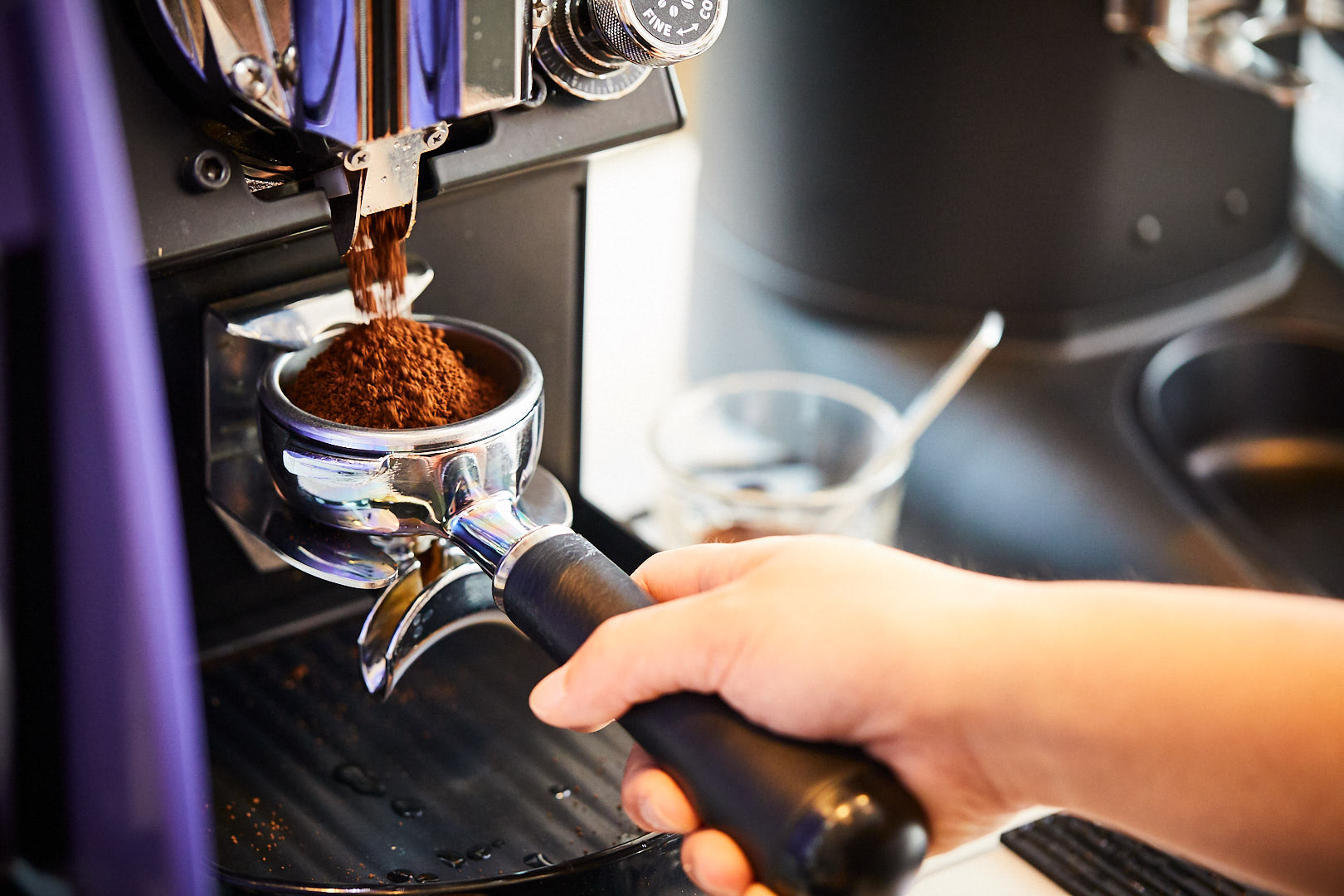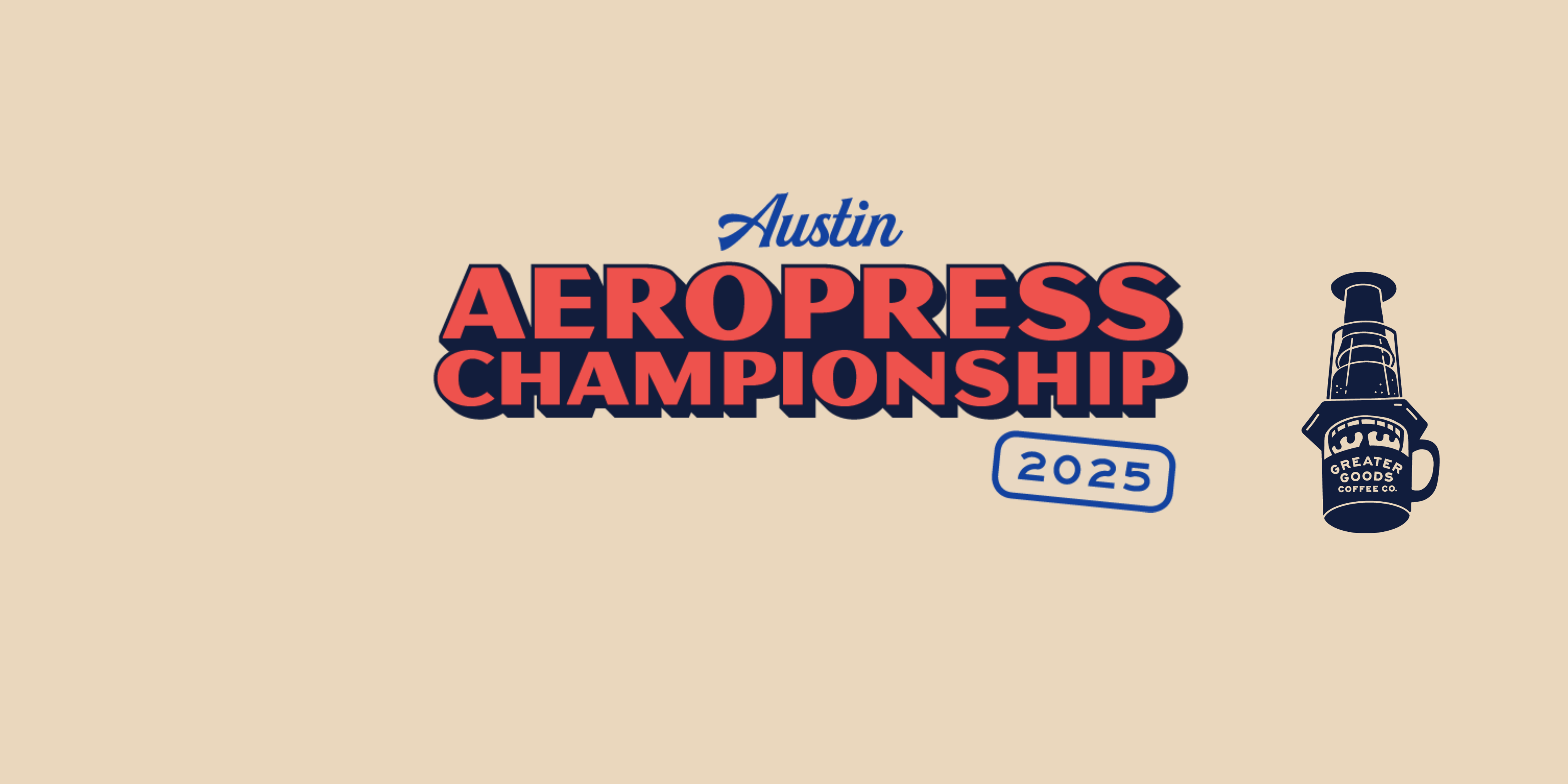Late last summer, a handful of us Greater Goods baristas had a pre-Greenbelt breakfast at Sour Duck Market. Of course, this was before social distancing and takeout only, when five friends could sit a little too close together at a picnic table and take turns tasting each other’s kolaches.
It was barely 10 a.m. and nearly 90 degrees (in typical Texas fashion). We were drinking cold brew and raving about it loudly, making sure the surrounding patrons could hear.

My favorite picture from that day, featuring kolache
“Have y’all tried the cold brew here?” said Emily, raising her glass to the sky. “It’s the best I’ve ever had! And that’s sayin’ something!” We were drinking Connection, the Greater Goods house cold brew. We were being silly. It was delightful.
That feeling seems light years away now. It’s hard to believe how quickly things changed, and how quickly our team has adapted. I am proud to be part of the GG family, through thick and thin. Who knows how long this will all last. Who knows what the “new normal” will look like. For now, we’re going to keep moving forward in the spirit of positivity because, to say it plainly, it’s just what we do.
Anyway, let’s cut to the chase. Our production manager, Megan, makes a phenomenal cold brew. It’s smooth and crisp, chocolatey and nuanced, and clean and flavorful. It is not an overstatement to say it’s one of the best in town.
Today we’re going to tell you exactly how she does it, so you can give it a go in the comfort of your kitchen. In 16-ish hours, you’ll be sipping on a cold brew, reminiscing about the good ol’ days of moseying through the farmers market on a balmy July morning.

At our roastery in Dripping Springs, we brew our cold brew at a ratio of five pounds of coffee to 14 liters of water. That’s a lot of cold brew, but we’ve translated it into a DIY-sized recipe that’s easy to follow with incredible results.
Your home brew ratio is 12 ounces of coffee to two liters of water.
This is going to give you approximately 64 ounces of cold brew concentrate to dilute at a ratio of 1 part coffee to 1.3 parts water (or to taste). For all of y’all who like percentages, that’s about 43% cold brew concentrate and 57% water. For all of y’all that prefer your coffee like you prefer your financial safety net (strong), just add a dash of milk or cream to the concentrate and call it a day.
We use the Toddy System for our large-scale production, but we’ve seen it done successfully in a number of ways. The Filtron is a solid brew method. You could use a french press. If you’re really strapped for materials, a large jar, cheesecloth, and strainer can get the job done.
Regardless of your approach, a few things remain constant: first of all, your coffee should be ground coarse, about a 28 on a Baratza Encore.
Secondly, always use filtered water when brewing and diluting. We can’t stress this enough. Good coffee starts with good water, just like beer, and, honestly, your whole existence as a human.
Megan recommends pouring layers of coffee, then water, to ensure all of the grounds are wet. Stir as little as possible to avoid over-extraction.
Once you’ve reached your optimal brew ratio (12 ounces of coffee, two liters of water), you’re ready to do absolutely nothing! That’s the beauty of cold brew.
We’ve found the best time and temperature for brewing to be 16 hours at 50-60 degrees fahrenheit.
This temperature can be tricky to replicate at home, so Megan suggests either 12 hours at room temperature or 20-24 hours in the fridge, but play around! Time is one of the easiest ways to adjust your cold brew recipe to suit your palate.
After you’ve steeped for your chosen amount of time, you’ll want to remove the grounds from the liquid to stop the brewing process. The way you do this will depend on your brewing method.
There you have it, folks. Cold brewski for days.

And now, a few frequently-asked questions:
Which coffee should I use for cold brew?
Cold brew preferences should be treated the same as any other brew methods. If you like lighter roasts with high acid as drip coffees, chances are you'll like them as cold brew, too. We recommend sticking with sweet coffees, as some of the more herbaceous or savory roasts can come up flat in cold brew (unless that's what you're into). Natural coffees often lend the most sweetness and a smoother mouthfeel due to the higher fat content. We use our Connection blend for our cold brew. Our seasonal cold brew is made of 50% Suke Quto and 50% Fresh Perspective.
How long will my cold brew last?
We recommend a 90-day shelf life, if refrigerated.
What do I do with the leftover grounds?
Compost them, use them in your garden, or make a face scrub! We could all use a good exfoliator every now and again.
Check out our brew guide video for a step-by-step recap of her process:



